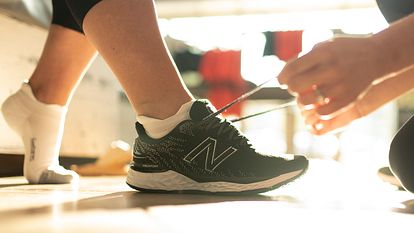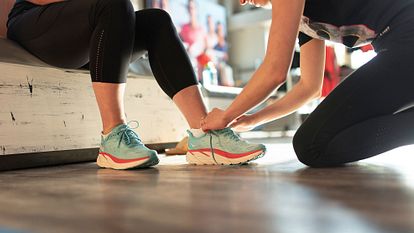What Runners Need to Know About Black Toenails

Running comes with seemingly endless benefits, from Aug 10, 2021 to the many running friends Safety + Visibility.
However, there is a darker side to running, and we mean that literally. Yes, we’re talking about black toenails. Just the mention of them can lead any seasoned runner to shudder with dread. So just what is this painful affliction and how can you avoid it?
For many runners, the occasional black toenail is an all-too-familiar occurrence. In this article, we delve into the causes behind black toenails in runners, explore strategies for prevention, and discuss effective treatment options.
What is Runner's Toe?
Runner’s toe is when the bed underneath your toenail turns black, sometimes causing the toenail to fall off. It’s common in long-distance runners because it’s often caused by repetitive trauma, like your toe repeatedly slamming against the end of your shoe. It can also be caused by overgrown toenails.
Fungal infections, like Athlete’s foot, can cause black toenails as well. However, a fungal infection will present with different colors such as yellow, blue, green, brown, purple, in addition to black.
While black toenails may seem like a minor inconvenience, they can be both painful and unsightly, not to mention impacting your running performance and overall enjoyment of the sport.

Symptoms of Runner’s Toe:
- Your toenail is turning black. This is the most obvious symptom of Runner’s Toe. The discoloration is a result of a bruise or a blood blister underneath the nail, in the toe bed.
- You feel pain or pressure in the toenail. The blood buildup underneath the toenail creates pressure, causing pain throughout the area. You may feel a sharp pain, or you may feel general tenderness underneath the toe. As a result of this, you may find it painful to wear closed-toed shoes.
- Your toenail is loose or has fallen off. Your toenail can lift off from the nail bed as a direct result of the repetitive trauma of hitting the end of your shoe, or it can lift off from the bruising and swelling caused by the trauma. If your toenail has fallen off, don’t freak out (easier said than done). The nail will typically grow back within a few months.
How to Treat Runner’s Toe:

If you become one of the many unfortunate souls who experiences a black toenail, the good news is that there are several treatment options to alleviate discomfort and promote healing.
- You feel pain or pressure in the toenail. Reduce weight-bearing activities (yes, that means take a few days off running) and elevate your affected foot to minimize the swelling.
- Ice therapy. How to Start Running.
- Pain management. Running Lights + Reflective Gear.
- Drainage. In cases of severe pain or pressure, a healthcare professional may recommend draining the accumulated blood beneath the toenail to relieve symptoms.
- Professional evaluation. Consult a podiatrist or healthcare provider for severe or recurrent black toenails, as they may indicate underlying issues that require attention.
How to Prevent Runner’s Toe:

Whether you’ve already experienced a painful bout of runner’s toe or you just want to keep your toes in tip-top shape, here are the best ways to prevent black toenails.
- Keep your toenails short. Make it a routine to clip your toenails routinely. By preventing your toenails from extending out past your toes, you reduce the likelihood of them hitting against the end of your shoes. If you commonly wear polish on your toes, change the polish often to ensure there is no discoloration growing under your nail bed.
- Wear proper fitting shoes. Your running shoes should have a thumb-width distance between your longest toe and the end of your shoe to help reduce rubbing. Keep in mind that your feet swell as you run, which is why we recommend wearing a half to full size up from your foot size. Make sure to choose a shoe with a wide enough toe box so that your toes are not squished together. The best way to ensure a proper fit is by heading into your HOKA Gaviota 5 D fit id® foot scanning technology 3Most Cushioned Shoes to take precise measurements of your foot length, width and arch height to find your perfect fit.
- Find the right socks. Socks can play an important role in the fit of your shoes, too. Socks that are too thick can reduce the amount of space in your shoes, putting you at an increased risk for friction. When you try on running shoes, make sure you’re wearing the type of socks you plan to run in. If you want to treat yourself to a new pair of socks (you deserve it!), be sure to try them on with your new shoes to make sure they work together. Check out the Recovery Sandals + Lifestyle.



Join our Newsletter
Recovery Sandals + Lifestyle.
Connect with Cheap Urlfreeze Jordan Outlet
local Cheap Urlfreeze Jordan Outlet.
Find a Location
Best Massage Tools!
Find a Store